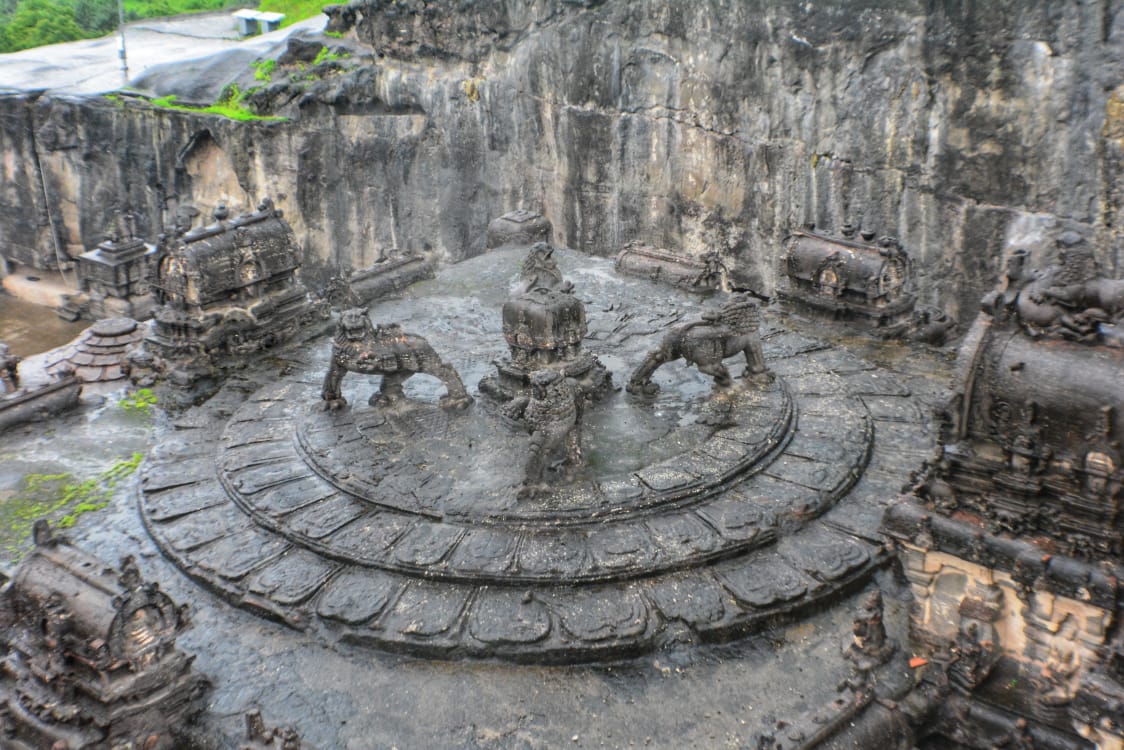Hidden in the rocky landscape of Maharashtra’s Aurangabad district lies a marvel that continues to leave historians, travelers, and archaeologists spellbound—the Kailasa Temple Ellora. Carved from a single massive rock, this 8th-century wonder is not just a temple but a breathtaking example of human imagination meeting divine devotion. When you stand before it, you don’t just see a monument; you witness a vision that was turned into reality with chisels and hammers nearly 1,200 years ago.
Unlike most temples that were constructed block by block, the Kailasa Temple was carved top-down from one monolithic rock. This means the artisans began at the top and worked their way down, ensuring every detail, every sculpture, and every chamber emerged directly from the rock face. It is a feat so extraordinary that even modern architects struggle to explain how it was executed with such precision in those times.
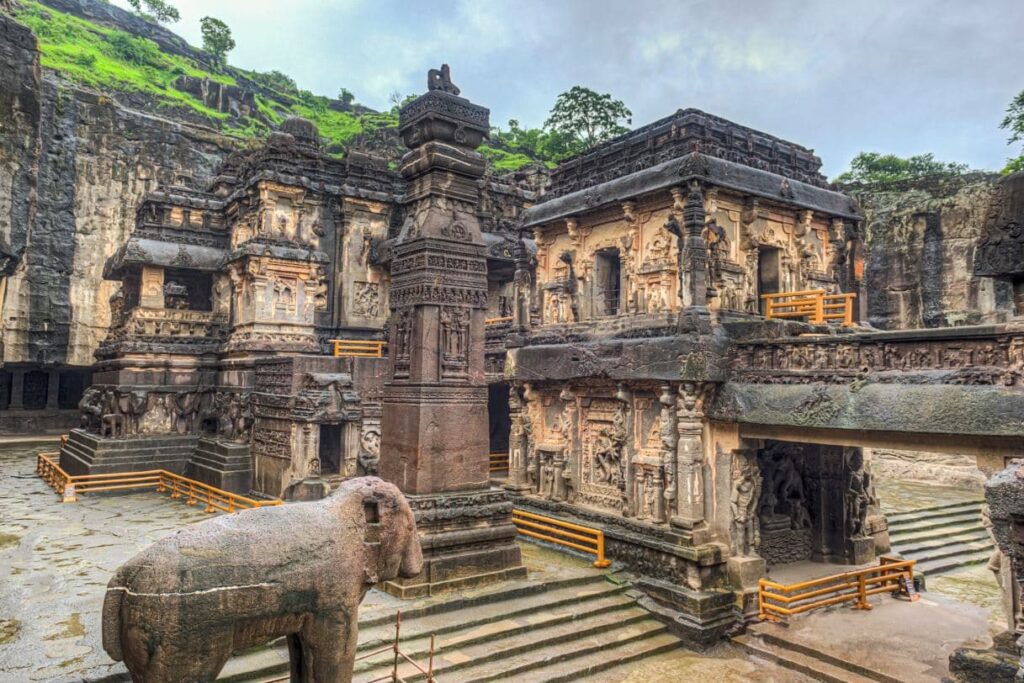
The Birth of a Vision Kailasa Temple Ellora
The Kailasa Temple was commissioned in the 8th century by Rashtrakuta king Krishna I. According to inscriptions, the temple was meant to replicate Mount Kailash, the mythical abode of Lord Shiva. But this was not just an act of devotion—it was also a statement of power, showing that the Rashtrakutas could achieve something beyond imagination.
Legend has it that the temple was built after the queen prayed to Lord Shiva for the king’s health. She promised to build a temple and vowed to fast until she saw its shikhara (spire). To fulfill this, the chief architect planned a unique method—carving from the top—so that the spire would appear first, satisfying her vow. Whether the legend is true or not, the result remains one of the greatest architectural masterpieces in history.
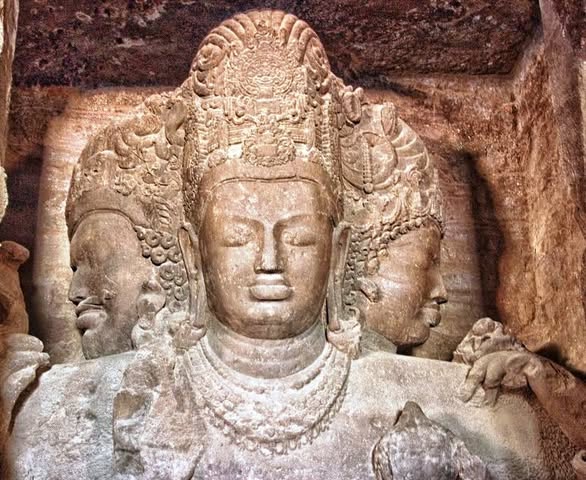
Mysteries That Surround Kailasa
Even though historians have studied the temple for decades, many questions about Kailasa remain unanswered. The most puzzling is how it was built. Removing more than 200,000 tons of rock with simple tools seems nearly impossible. Some archaeologists believe thousands of workers may have spent decades, even centuries, chiseling away at the rock. Others think there must have been advanced planning techniques far ahead of their time.
There are also legends that attribute the temple’s creation to divine intervention. Locals often say that only gods could have inspired or guided such work. Some even claim that extraterrestrials must have had a hand in its making—an idea fueled by the sheer scale and perfection of the carvings. While these remain myths, they show how deeply the temple captures human imagination.
Another mystery is the precision of alignment. The temple’s design and layout perfectly balance symmetry and proportion, something difficult to achieve even with modern architectural tools. Was it mathematical genius, trial and error, or divine guidance? We may never know for sure.

Legends That Add to Its Charm
Like most ancient Indian monuments, the Kailasa Temple comes wrapped in fascinating legends:
- The Queen’s Vow: As mentioned earlier, one tale suggests that the queen fasted until she saw the temple’s shikhara, leading the architects to carve from the top down so it would appear quickly.
- Shiva’s Dream: Another story claims the temple was created because Lord Shiva appeared in a dream to the king and ordered him to build his earthly abode.
- Celestial Builders: Some local folklore says that gods themselves carved the temple overnight, leaving humans to marvel at their creation.
While historians focus on evidence, these stories keep the temple alive in the hearts of devotees and visitors alike, giving it a spiritual aura beyond stone and design.
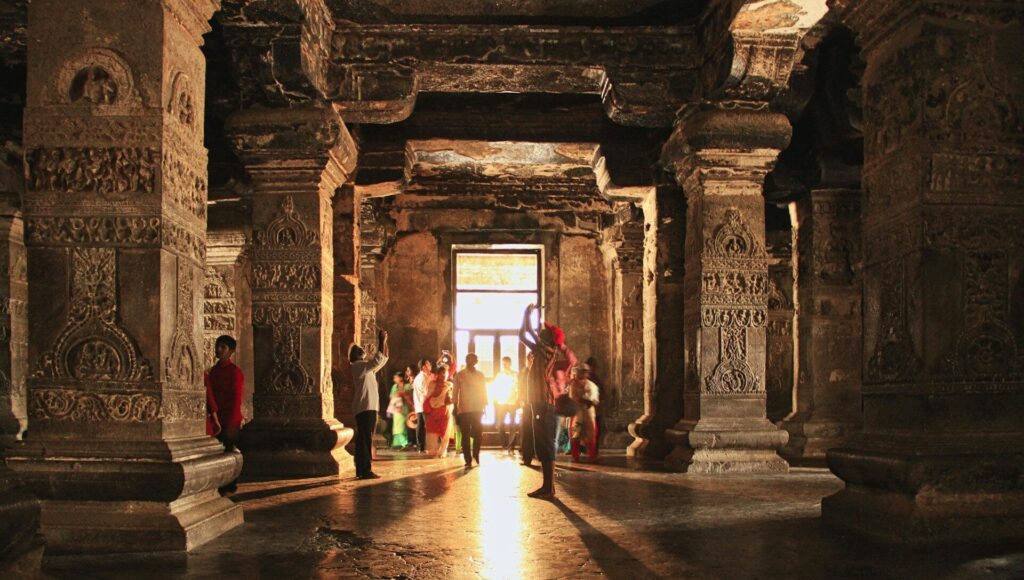
Kailasa in the Larger Context of Ellora
The Kailasa Temple is part of the Ellora Caves, which include 34 caves carved into a basalt cliff. What makes Ellora unique is its religious diversity—17 Hindu caves, 12 Buddhist caves, and 5 Jain caves co-exist in harmony. This reflects India’s spirit of tolerance and inclusivity, where faiths thrived side by side.
Within this mix, Kailasa stands as the largest and grandest monument, symbolizing not only devotion to Shiva but also the confidence of an empire. Its presence elevates Ellora from a cave complex to a world heritage treasure.
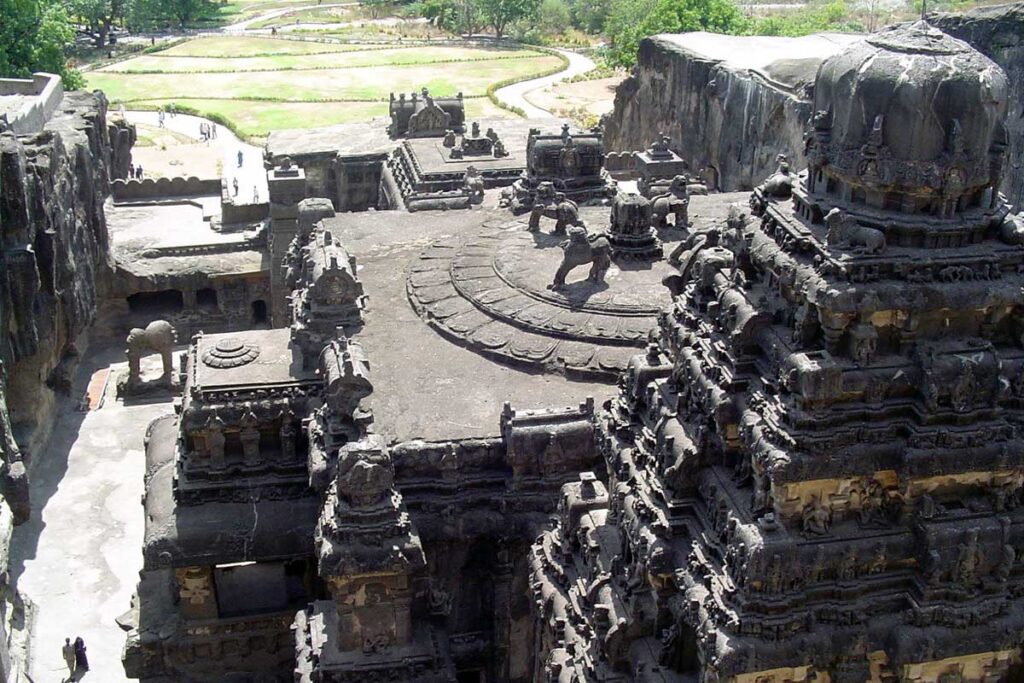
Stories in Stone
One of the most striking aspects of the Kailasa Temple is how it tells stories through its carvings. Walking through the temple feels like flipping the pages of an ancient illustrated manuscript.
- Ramayana Panels: Scenes from the life of Rama, such as his battle with Ravana, are carved into the walls.
- Mahabharata Panels: The Kurukshetra war, Draupadi’s swayamvara, and other episodes appear in stone relief.
- Shiva’s Tales: The walls also illustrate the marriage of Shiva and Parvati, the descent of Ganga, and Shiva’s dance as Nataraja.
Each sculpture is not just decorative—it’s narrative. The artisans captured expressions, emotions, and movement in stone so realistically that you feel the characters might step out any moment.
Spiritual Significance
For devotees, Kailasa Temple is more than an architectural wonder. It is seen as a sacred journey into Lord Shiva’s world. Mount Kailash is believed to be unreachable for most humans, but this temple was meant to bring that divine presence to earth.
Inside the temple, the sanctum with the Shiva linga feels calm and powerful. The moment you enter, the outside world seems distant. Pilgrims believe that praying here is as holy as offering prayers directly at Mount Kailash in Tibet.
A Living Wonder
Though centuries have passed, the Kailasa Temple is not abandoned. Pilgrims, travelers, and history enthusiasts still visit it with the same awe as in ancient times. Festivals and rituals are still observed here, keeping the temple alive not just as a monument but as a place of worship.
The temple is also part of the Ellora Caves, a UNESCO World Heritage Site, which includes 34 caves belonging to Hindu, Buddhist, and Jain traditions. Kailasa stands as the centerpiece, a jewel among jewels.
The First Impression
Anyone who visits Kailasa Temple describes the first sight as unforgettable. As you approach, you see what looks like a standalone structure, but then you realize it is carved out of the mountain itself. Walking through the gate into the courtyard, you’re struck by the sheer scale—how could humans carve something so vast and so detailed, without modern tools?
The temple does not overwhelm you with size alone. It charms you with detail, surprises you with stories, and calms you with its spiritual aura. It’s one of those places where even silence feels full of meaning.
Why It Stands Apart
Many rock-cut temples exist in India, but Kailasa Temple is unique because:
- It is the largest monolithic structure in the world carved from a single rock.
- The top-down method of construction is rare and extremely difficult.
- Its scale and detail together are unmatched.
- It reflects a blend of devotion, artistry, and engineering genius.
When compared to wonders like the pyramids of Egypt or Machu Picchu in Peru, Kailasa stands tall as India’s answer to the question: “What can human hands achieve without machines?”
Nearby Attractions
If you plan to visit Kailasa Temple, you’ll find plenty of other attractions nearby that make the journey even more rewarding.
1. Ajanta Caves
Located about 100 km from Ellora, the Ajanta Caves are known for their exquisite Buddhist paintings and sculptures. Dating back to the 2nd century BCE, these caves transport you into the world of ancient monks, meditating and painting stories of Buddha’s life.
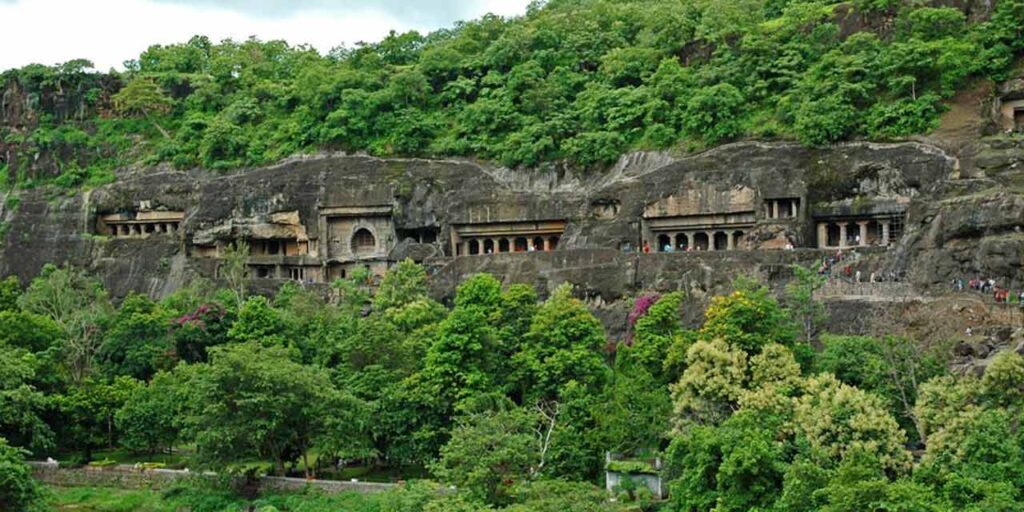
2. Grishneshwar Temple
Just a short walk from Ellora lies the Grishneshwar Jyotirlinga Temple, one of the 12 sacred jyotirlingas of Lord Shiva. A visit here beautifully complements the Kailasa experience.
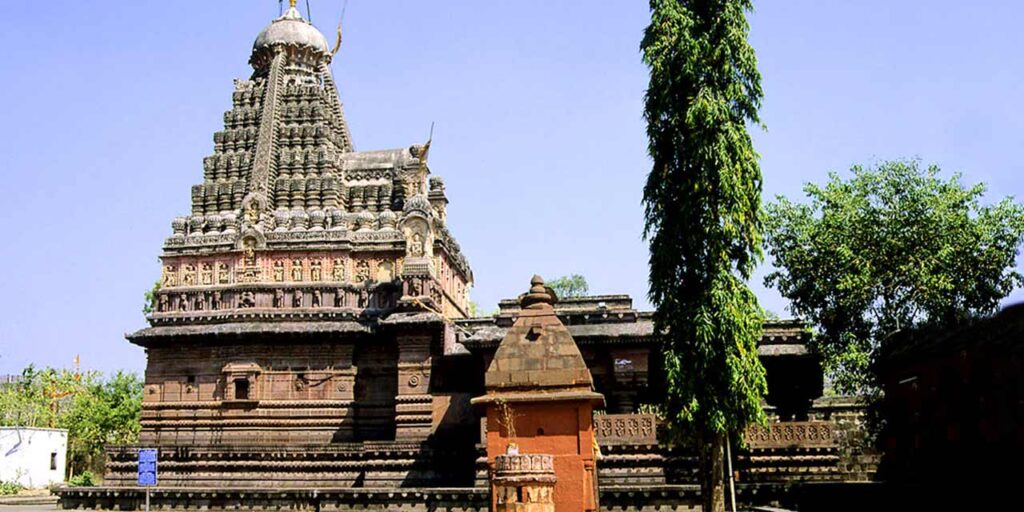
3. Daulatabad Fort
Rising dramatically on a hill, this medieval fort once served as the capital of the Delhi Sultanate under Muhammad bin Tughlaq. Its unique defense mechanisms and panoramic views make it a fascinating stop.
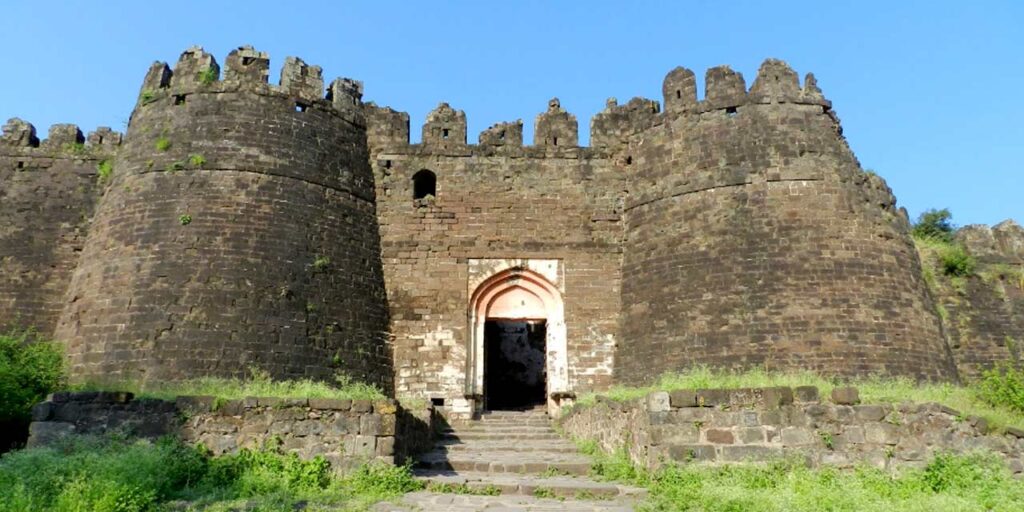
4. Aurangabad City
The bustling city nearby offers its own gems—Bibi ka Maqbara, often called the “mini Taj Mahal,” and bustling local markets selling handloom and handicrafts.
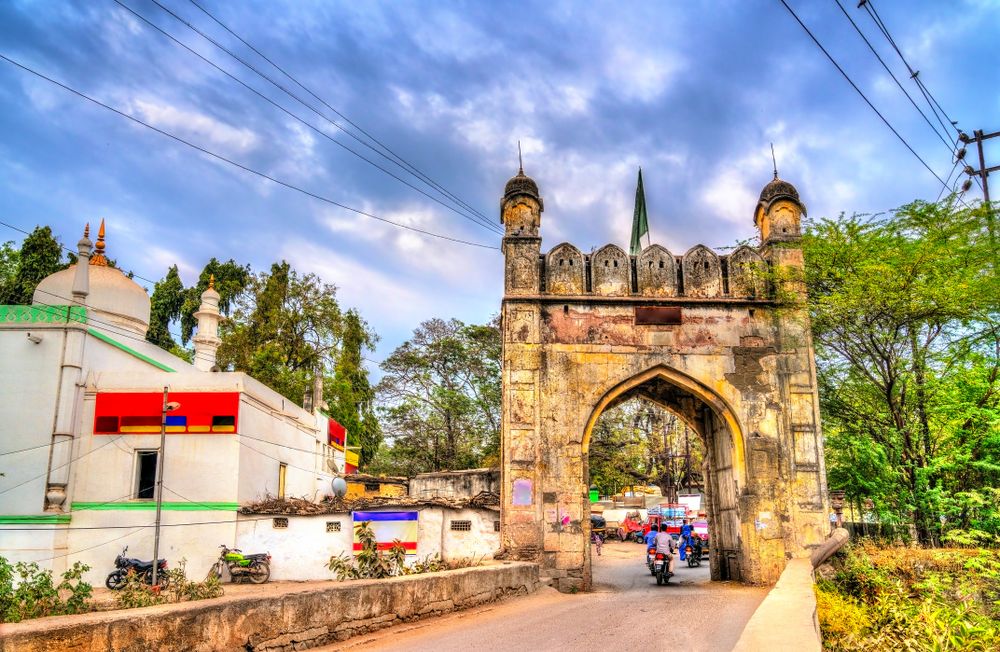
5. Lonar Crater Lake
For something unusual, you can travel a bit farther to the Lonar Lake, formed by a meteor impact. It’s one of the world’s only saltwater lakes created this way, surrounded by myths and temples.
Exploring these places along with Kailasa makes for a journey rich in history, spirituality, and natural wonders.
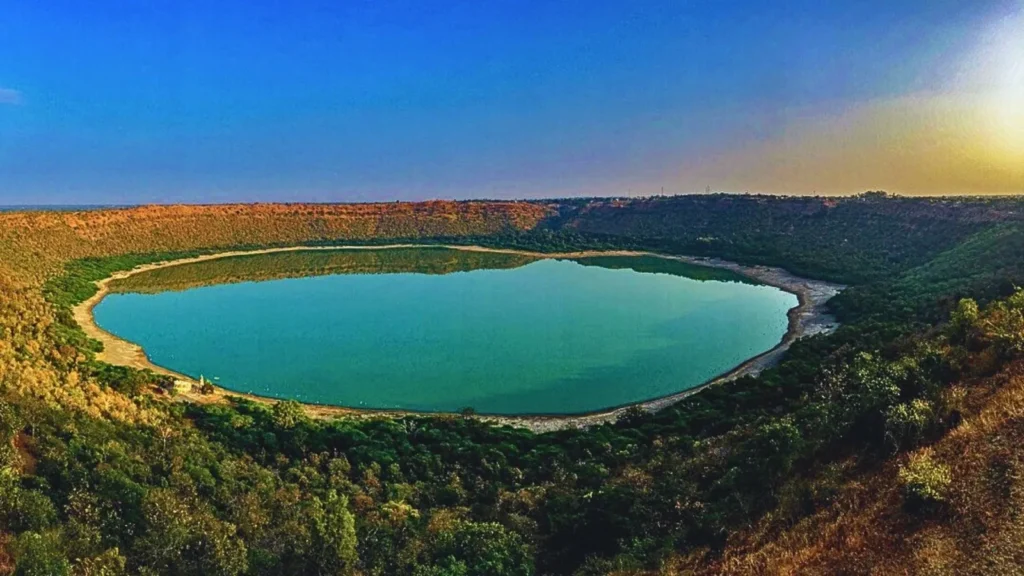
Modern-Day Significance
Today, the Kailasa Temple is not just a historical relic but a living monument. Devotees continue to offer prayers, festivals are celebrated, and rituals bring the temple alive. For travelers, it’s an education in stone—showing how artistry and faith can create timeless wonders.
Tourism has also brought the temple into global conversations. UNESCO recognition has ensured preservation efforts, and scholars continue to study the site, uncovering new insights into ancient engineering and art.
Interestingly, Kailasa also inspires modern architects and artists. Its top-down construction method, detailed storytelling, and balance of functionality with beauty are studied in architectural schools worldwide.
Travel Tips for Visitors
If you’re planning to experience Kailasa Temple, here are some useful tips:
- Best Time to Visit: October to March offers pleasant weather. Summers can be very hot in Maharashtra, while monsoons bring heavy rains.
- Getting There: Aurangabad is the nearest city, well-connected by air, train, and road. From there, Ellora is about 30 km away.
- Entry Timings: The Ellora caves are usually open from 6 AM to 6 PM, but it’s best to confirm locally.
- Guides: Hiring a guide can make your experience richer as they explain the stories behind the carvings.
- Photography: Cameras are allowed, but try to capture the temple respectfully without disturbing rituals.
- Walking Shoes: The complex is large, with uneven surfaces, so comfortable footwear is a must.
- Nearby Stay Options: Aurangabad offers a range of hotels, from budget stays to luxury resorts.
- Combine Your Trip: Plan to include Ajanta Caves and other nearby attractions to make the most of your journey.
FAQ Section
Q1: What is Kailasa Temple at Ellora?
A: Kailasa Temple is a massive rock-cut temple dedicated to Lord Shiva, located in the Ellora Caves of Maharashtra. It is carved entirely out of a single rock.
Q2: Who built the Kailasa Temple?
A: The temple was commissioned by Rashtrakuta King Krishna I in the 8th century CE as a tribute to Lord Shiva.
Q3: Why is Kailasa Temple famous?
A: It is renowned as the largest monolithic rock-cut temple in the world, admired for its intricate sculptures, Dravidian architecture, and engineering marvel.
Q4: How was the Kailasa Temple built?
A: The temple was carved top-down from a single basalt rock using chisels and hammers, a unique feat of ancient Indian engineering.
Q5: What is the architectural style of Kailasa Temple?
A: The temple is designed in Dravidian architectural style, featuring towering gopurams, intricate carvings, massive pillars, and mythological sculptures.
Q6: What are the timings of Kailasa Temple, Ellora?
A: Kailasa Temple (Ellora Caves) is open from 6:00 AM to 6:00 PM daily, except on Tuesdays.
Q7: Is there an entry fee for Ellora Caves?
A: Yes, Indian citizens pay ₹40, while foreign tourists pay ₹600. Entry is free for children under 15 years.
Q8: What is the best time to visit Kailasa Temple?
A: The best time to visit is between October and March, when the weather is cooler and ideal for exploring.
Q9: How do I reach Kailasa Temple in Ellora?
A: Ellora is located 30 km from Aurangabad. The nearest airport is in Aurangabad, and regular buses, taxis, and trains connect the site.
Q10: What are the nearby attractions to Kailasa Temple?
A: Major attractions include:
- Ellora Caves (34 caves total)
- Grishneshwar Jyotirlinga Temple
- Daulatabad Fort
- Ajanta Caves (100 km away)

